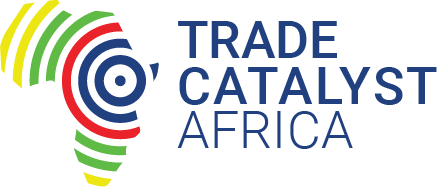At the Holili–Taveta border, long-haul driver Edwin Lasti recalls waiting for up to a month for clearance processes to be completed. “Because of the OSBP and the digitalisation of processes, you can now get cleared within a day,” he says. However, in places where no One-Stop Border Posts (OSBPs) exist, drivers still face long waits and, with them, the extra cost of hotel meals and other daily expenses (TradeMark Africa, Compendium of Impact Stories, Vol. 5, 2023).
These borders, once praised for their speed and ease, are now under strain. Africa currently operates 32 OSBPs, and 85 more border posts have been identified for transition into OSBP status (AUDA-NEPAD). Yet rising traffic is once again causing congestion, even at the best-performing OSBPs that have served the region well for over a decade. While these are now struggling, many other borders are in an even worse state, still operating as two-stop border frontiers, such as the Oloitokitok–Tarakea border post. Here, traders must clear their goods twice—once on the Kenyan side and again at the Tanzanian side—leading to even longer delays and higher costs. According to CBRTA (2022), trade delays inflate the price of goods by 30–40 per cent, with consumers usually bearing the additional costs.
For small businesses, the challenge is even greater. With a $50 billion trade finance gap across Africa (AfDB, 2023), many are locked out of financing. They lack the collateral banks require and cannot secure the loans they need to fulfil orders or ship goods. Deals often fall through simply because the funding required to move them does not exist.
Against this backdrop of increasing border delays, ballooning costs, and stalled credit flows, Trade Catalyst Africa (TCA), an innovative financing vehicle, steps in. TCA operates through three distinct ‘windows’, each designed to address a specific pain point.
1. Project Preparation
Investors require assurance of a project’s bankability, scalability, and long-term sustainability before committing funds, especially in high-risk, early-stage infrastructure projects. However, to attract financing, a project must first demonstrate its viability through rigorous studies and planning. In many cases, developers lack the resources to cover these initial costs, leaving high-potential projects stalled.
This is where TCA steps in. By providing first-loss equity—meaning TCA absorbs initial financial risks and is last to recover its investment—the organisation enables early-stage technical assistance. This includes funding for feasibility studies, technical designs, transaction structuring, and environmental and social impact assessments. By de-risking projects at this crucial stage, TCA makes them investment-ready, thus attracting further financing.
Case Study 1: Border Breakthroughs
A recent $300,000 feasibility study at Nakonde unlocked $30 million in grants to modernise the Zambia–Tanzania frontier. Once fully implemented, modern scanners, smart gates, and new warehouses will reduce crossing times from two days to just two hours, significantly cutting trade costs and boosting regional trade.
2. Developer Window: Building Trade Infrastructure
Africa’s trade demands modern infrastructure—from border posts to warehouses—but private investors often hesitate to fund such projects due to perceived risks or complexity.
TCA addresses this gap by using concessional capital to make projects bankable and attract additional investors. Working with banks and development partners, TCA shares risks and promotes investment in both hard and digital infrastructure. This includes logistics facilities, ports, equipment leasing, industrial parks, single windows, digital trade corridors, and AI-driven analytics tools.
Case Study 2: Building Tomorrow’s Factories Today
The Athi River Garment Park, located just outside Nairobi, is arguably Africa’s first sustainable garment factory, constructed from upcycled containers. The Park will employ 2,000 workers—80% of whom are women and youth. It is poised to enhance Kenya’s export potential, align with global trends towards sustainable production, and set a new benchmark for industrial sustainability in Africa. TCA’s investment of $1.3 million in subordinated debt attracted an additional $530,000 in grant funding from USAID and $300,000 from Gatsby Africa. Modular EPZ contributed a further $300,000 in developer equity.
3. Trade Finance Window
Currently, seven out of ten small businesses cannot access loans (World Bank, 2019), primarily due to a lack of collateral.
TCA resolves this issue by acting as a fund-of-funds, providing subordinated debt to trade finance capital providers. This enables onward lending to small- and medium-sized enterprises (SMEs) in high-export-potential sectors such as cotton, textiles, garments, and horticulture. This window pays particular attention to women- and youth-owned businesses.
Case Study 3: Easing Trade for Small Businesses
In partnership with the Trade and Development Bank and other strategic stakeholders, TCA has developed EASETRADE—a digital platform that says “YES” when banks say “NO”. EASETRADE offers digital loans without requiring collateral, using AI-based credit scoring. The platform’s current lending pool stands at $10.2 million and targets over 4,000 businesses. It aims to catalyse $100 million in financing by 2027, while delivering a projected return of 13–20% for investors and scaling SME exports.
Weathering the Future
As TCA advances towards its goal of mobilising $300 million, the focus turns to climate-smart infrastructure, policy advocacy, and sustainable financing. Recent discussions with EU financiers could digitise over five critical border crossings and introduce innovative ways to fund their sustainability. With public budgets under strain and donor grants in decline, the aim is to enhance efficiency at border posts while introducing small, affordable user fees to ease the burden on government resources. Co-creation discussions with policymakers are also underway to cultivate an enabling environment for African businesses to grow and thrive.
At the Nakonde construction site, amidst dust and dynamism, a customs officer expresses his hope: “Soon, trucks will roll as fast as market day crowds.” It is this kind of tangible impact that defines TCA’s mission—to redefine Africa’s place in global trade by growing exports through increased trade finance and infrastructure investment.
Why This Matters for Stakeholders:
- Governments: Every $1 invested in trade infrastructure yields $4 in GDP growth (World Bank).
- Investors: Blended finance models de-risk African investments while offering market returns.
- SMEs: Digital platforms are democratising access to growth capital.



